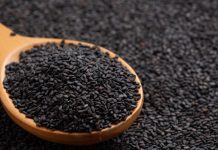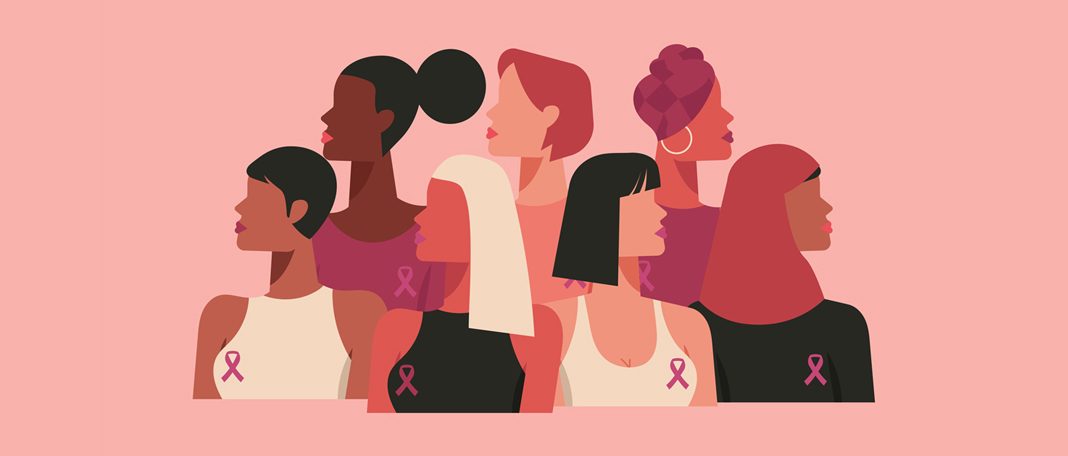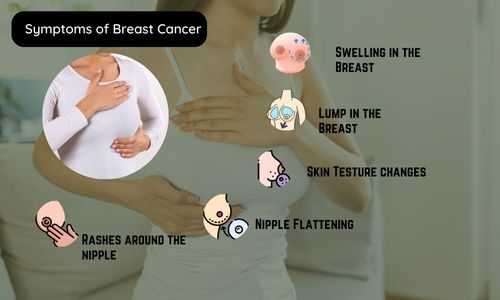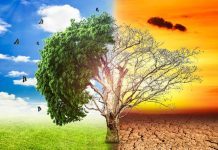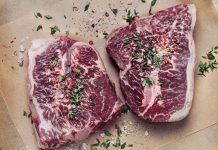Breasts are essential for human growth and evolution, providing energy and impacting the immune system. They change life, including breast cancer, caused by hereditary, age, radiation exposure, and lifestyle factors. Treatments include hormonal therapy, radiation therapy, and surgery.
What Is Breast Cancer?
Breast cancer is a disease that affects the cells of the breast. It starts when unhealthy cells in the breast multiply rapidly, forming a growth called a tumor. These cancerous cells can spread to other parts of the body (metastasis). There are different types of breast cancer, such as DCIS (ductal carcinoma in situ), invasive ductal carcinoma, invasive lobular carcinoma, and inflammatory breast cancer. Each type has its characteristics and needs different treatments.
Symptoms of Breast Cancer?
Breast cancer symptoms can vary. A common sign is a lump in the breast or underarm, but not all lumps are cancerous. Other symptoms include changes in breast shape or size, such as asymmetry or distortion. Skin texture changes, like redness, dimpling, or puckering, may also occur. Nipple changes, like inversion, flattening, or discharge (especially bloody discharge), can be concerning. While breast pain isn’t usually a sign of cancer, persistent or unexplained pain should be checked out.
Changes in breast texture resembling an orange peel can be a sign of underlying problems. These may be related to breast cancer or non-cancerous conditions. It’s essential to seek medical attention if you notice any persistent or unusual changes in breast appearance or feel. Regular breast self-exams, check-ups with a doctor, and mammograms are crucial for detecting breast cancer early and getting the best treatment. Early detection and intervention can improve outcomes and reduce the severity of the disease.
Read more to know about Breast cancer symptoms.
What Can I Do to Reduce My Risk of Breast Cancer?
Breast cancer hazard reduction involves a proactive lifestyle technique, which includes maintaining a healthy weight, ordinary exercising, restricting alcohol consumption, and a nutritious weight loss program. Breastfeeding also can help reduce the danger, in particular for prolonged periods. Healthcare carriers have to discuss dangerous elements with their family members and comply with recommended screening suggestions. High-danger people may need risk-decreasing medications or surgical options. Staying informed, advocating for health, and adopting proactive measures can considerably lessen breast cancer hazards.
Read more to know about Preventing breast cancer
How Is Breast Cancer Diagnosed?
Breast cancer is identified through screening assessments, scientific examinations, and diagnostic methods. These tests encompass mammograms, medical breast tests, and diagnostic methods like breast ultrasound and MRI scans. If abnormalities are detected, a biopsy is achieved to attain a tissue pattern for laboratory evaluation. The consequences help healthcare carriers diagnose breast cancer, determine its kind and degree, and expand a customized remedy plan. Early detection is important for stepped-forward effects and a hit treatment.
How Is Breast Cancer Treated?
Breast cancer treatment is customized to each character’s particular diagnosis, level, and fitness. It commonly includes surgical treatment, radiation remedy, chemotherapy, hormone therapy, focused therapy, and immunotherapy. Surgery is frequently the preliminary treatment, observed by using radiation therapy to lessen recurrence. Chemotherapy, hormone therapy, and centered remedies spoil most cancer cells or goal particular growth pathways. Immunotherapy facilitates the immune gadget to understand and assault most cancer cells. The treatment plan is developed by multidisciplinary groups of healthcare providers. Supportive care services, which include counseling and vitamin aids, also are essential to help patients address the disease.
Facts About Breast Cancer
Breast cancer is a well-known sickness involving a peculiar mobile increase, with dangerous elements along with age, genetics, family history, hormonal influences, and lifestyle. Early detection and remedy alternatives include surgery, radiation, chemotherapy, hormone therapy, centered therapy, and immunotherapy.
1. Age at diagnosis
Breast cancer can affect people of any age, however, the hazard will increase with age. Most breast cancers are diagnosed in women over 50, with the median age at diagnosis being around 62. However, more youthful women and even men also can expand breast cancer. Regular screenings and cognizance of breast fitness are essential for early detection and better treatment consequences.
2. Breast cancer risk
Several elements contribute to the threat of growing breast cancer, consisting of age, gender, family records, genetic mutations, hormone ranges, lifestyle elements, and environmental exposures. Women have a better chance than men, and the risk will increase with age. Individuals with family records of breast cancer, specifically close households like a mother, sister, or daughter, have an elevated risk. Genetic mutations, consisting of BRCA1 and BRCA2, additionally raise the chance appreciably
3. Sex at birth and getting older
Breast cancer is more usually recognized in girls, but guys can also broaden the ailment. Although rare, men account for approximately 1% of all breast cancer instances. As people age, their chance of developing breast cancer increases. Most breast cancers occur in women over the age of fifty, but younger girls and even men can also be affected.
4. Family history
A circle of relatives history of breast cancer, in particular in close households like a mom, sister, or daughter, will increase the chance of developing the disorder. Individuals with one first-diploma relative (mom, sister, or daughter) with breast cancer have approximately twice the hazard of developing breast cancer as compared to those without a circle of relatives records. However, it is essential to notice that most instances of breast cancer arise in people without a circle of relatives records of the ailment.
5. Genetics
Genetic mutations, along with BRCA1 and BRCA2, considerably boost the hazard of growing breast cancer. These mutations are inherited and can be handed down via households. Individuals with BRCA1 or BRCA2 mutations have a much better risk of growing breast cancer as compared to the overall population. Genetic testing and counseling are available to individuals with a family record of breast cancer to assess their hazard and make knowledgeable decisions approximately screening and prevention alternatives.
Key Statistics about Breast Cancer In The United States
Breast cancer incidence in the United States
Breast cancer is a major public health issue in the US, with disparities in incidence rates across age groups. While rates have slightly declined in recent years, African American women face higher mortality rates and access to early detection and treatment. Efforts to address breast cancer include promoting healthy lifestyles, early detection, and addressing healthcare access and resources.
| Aspect | Details |
| Overall Incidence Trends | – Slight decline in breast cancer incidence rates in recent years. |
| – Factors contributing to the decline include changes in screening guidelines, treatment advancements, and increased awareness. | |
| Age-Specific Incidence Rates | – Highest incidence rates observed among women aged 65-74. |
| – Breast cancer can affect women of all ages, including younger women and those over 75. | |
| Racial and Ethnic Disparities | – African American women have higher mortality rates and are more likely to be diagnosed with advanced-stage breast cancer. |
| – Asian American, Hispanic, and Native American women have lower incidence rates. | |
| – Disparities attributed to access to healthcare, cultural beliefs, and socioeconomic factors. | |
| Geographic Variations | – Urban areas generally have higher incidence rates. |
| – Rural areas may experience disparities in screening, diagnosis, and treatment access. | |
| Risk Factors and Prevention | – Factors include age, gender, family history, genetic mutations, lifestyle, and environmental exposures. |
| – Prevention efforts focus on promoting healthy lifestyle behaviors and early detection through regular screenings. |
Breast cancer statistics by age
Breast cancer costs vary by age, with the best rates among women elderly sixty-five-seventy-four. However, it impacts women of all ages, which includes more youth and people over 75. Younger girls are much less likely but might also face more aggressive paperwork. Older ladies have higher rates however higher survival quotes due to focus, screenings, and remedy advancements. Understanding age-related data allows tailor prevention efforts and treatment approaches.
Breast cancer survival & mortality statistics
Breast cancer survival charges have improved over the years due to early detection, diagnosis, and remedy alternatives. The five-year survival charge is around 90%, with early-level cancers having better prices. However, breast cancer remains a leading motive of most cancer-associated mortality, with African American women experiencing higher mortality costs. To reduce mortality, efforts consist of selling early detection, raising cognizance, enhancing healthcare admission, and advancing research into new remedy modalities and personalized medicinal drug methods.
Read more to know “Breast Cancer Survivor”
MYTH about Breast cancer
1. Wearing a bra can cause breast cancer
There isn’t any medical evidence to help the myth that carrying a bra, whether or not underwire or otherwise, contributes to the improvement of breast cancer. Numerous research have debunked this claim, confirming that there’s no causal relationship between bra-sporting conduct and breast cancer hazards.
2. Carrying your cell phone in your bra can cause breast cancer
There isn’t any conclusive clinical evidence linking using cell phones or wearing them in bras to an increased danger of breast cancer. The radiofrequency electromagnetic radiation emitted through cell phones is taken into consideration as non-ionizing and isn’t recognized to cause cancerous adjustments in breast tissue. However, it’s far recommended to comply with well-known recommendations for secure mobile telephone use and restrict extended exposure to electromagnetic fields.
3. Consuming too much sugar causes breast cancer
While immoderate sugar intake is related to diverse fitness problems, inclusive of obesity and diabetes, there’s insufficient proof to signify an instantaneous causal relationship between sugar intake and breast cancer development. Maintaining a balanced diet and wholesome lifestyle, which incorporates proscribing sugar consumption, is crucial for basic health however is not a guaranteed preventive measure in opposition to breast cancer.
4. All breast cancer is treated pretty much the same way
Breast cancer treatment is surprisingly individualized and tailored to the precise traits of every affected person’s cancer, together with the type, level, and organic features of the tumor. Treatment techniques can also consist of surgical procedures, radiation therapy, chemotherapy, hormone therapy, focused therapy, or a combination of those modalities. The remedy plan is determined based on elements including the tumor’s size, place, and whether it has spread to other elements of the frame.
5. Breast cancer only happens to middle-aged and older women
While breast cancer is more generally diagnosed in older women, it may affect people of any age, including more youthful women and men. Age is certainly a massive danger factor, but other factors along with genetics, family records, hormonal impacts, way of life picks, and environmental exposures also play roles in breast cancer risk. It is vital for individuals of every age to be aware of breast cancer risk factors and to practice breast fitness focus and ordinary screenings.
6. When treatment is over, you’re finished with breast cancer
Completing treatment for breast cancer does no longer necessarily mean that one is completed with the disease. Regular observe-up care, inclusive of ordinary scientific appointments, imaging studies, and blood assessments, is critical to display for recurrence or new cancer developments. Many people also enjoy lengthy-time period bodily and emotional results from breast cancer treatment, which may also require ongoing support and management. Survivors need to prioritize their normal health and well-being beyond the completion of initial treatment.
Read more to know: Myths About Breast Cancer
Conclusion :
In the end, breast cancer is a complicated sickness with various threat factors, misconceptions, and remedy methods. While giant progress has been made in early detection, prognosis, and remedy, breast cancer stays a full-size fitness mission international. Individuals need to be aware of breast cancer chance elements, exercise breast fitness focus, and go through everyday screenings. Debunking myths surrounding breast cancer, such as those associated with bra-sporting behavior, cell telephone use, and sugar consumption, is crucial to selling correct know-how and prevention.
Additionally, expertise that breast cancer can affect individuals of all ages and genders underscores the significance of comprehensive healthcare and aid structures. Through persistent studies, training, and advocacy, we can attempt in the direction of reducing the load of breast cancers, enhancing treatment outcomes, and ultimately enhancing the quality of existence for the ones stricken by the disorder.

